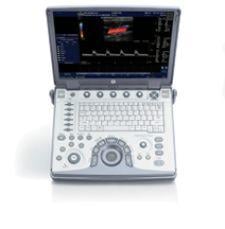
During the 2007 ASA show GE Healthcare unveiled its newly FDA approved Navigator anesthesia software, which can monitor the patient’s ability to feel pain and offers advice when issues arise in the OR. The company also introduced its Pressure Controlled Ventilation-Volume Guaranteed (PCV-VG) technology in the Avance Carestation, an advanced anesthesia delivery solution, and featured one of its compact ultrasound systems, the LOGIQ e.
The Navigator Applications Suite just received clearance from the FDA prior to the show. The software package includes Navigator Therapy, Navigator Protocol and Navigator Device. It receives data from supported GE anesthesia delivery systems, GE anesthesia patient monitors and intravenous drug infusion pumps.
Navigator Therapy analyzes drug therapy information to model and predict the effect of supported anesthesia-related drugs and drug interactions. It also helps clinicians determine effective treatment plans for each patient, and adjust the treatment as needed based on quick access to centralized and relevant information.
Navigator Protocol centralizes the hospital’s own care protocols at the point of need for immediate access and reference. Navigator Device troubleshoots technical problems in the anesthesia machine and provides specific step- by-step instructions on how to resolve a device issue. Navigator Applications Suite is one component of the GE Carestation.
At the 2006 ASA meeting, GE launched the PCV-VG mode on its Aisys Carestation. This year, the mode is available on the Avance Carestation, a compact, integrated anesthesia carestation combining advanced anesthesia delivery, patient monitoring and information management into an integrated perioperative system. The PCV-VG mode delivers all the benefits of pressure control ventilation at the same time it provides a consistent tidal volume to the patient. The benefits of pressure control ventilation include preventing over-pressure of the lungs, while helping to avoid alveoli collapse, supporting the filling of even the stiff alveoli early in the inspiratory cycle giving the maximum time for gas exchange, and it provides better oxygenation at lower peak airway pressures.
The LOGIQ e is designed specifically for anesthesia applications. It was launched in 2006, but the LOGIQ e Breakthrough 2008 features enhancements to image clarity, system simplicity and system efficiency.


 March 19, 2025
March 19, 2025 








